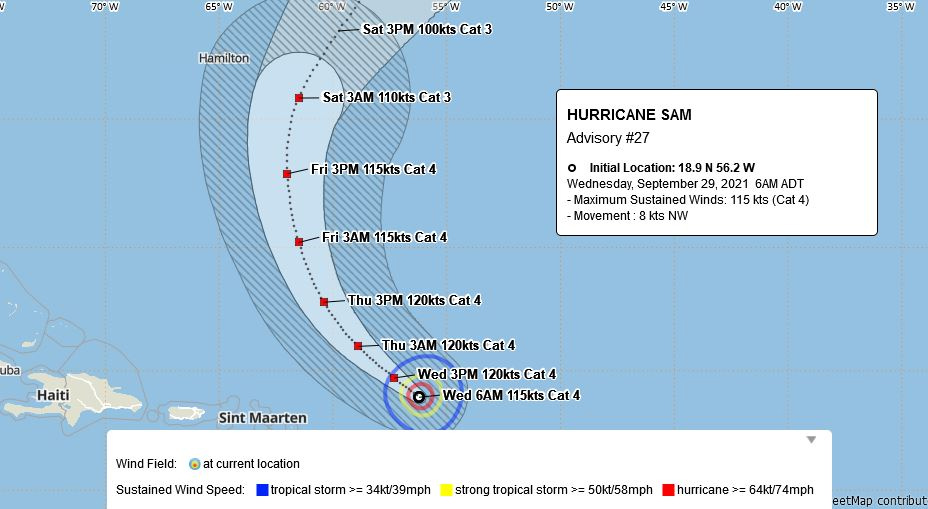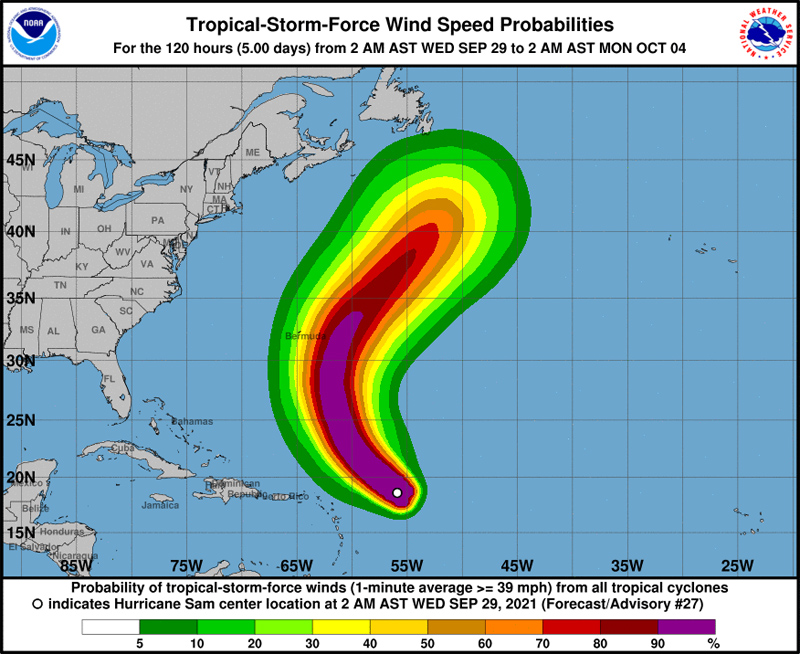BWS: Hurricane Sam Remains A ‘Potential Threat’
Hurricane Sam is a “potential threat to Bermuda”, the Bermuda Weather Service said this morning, with its closest point of approach to Bermuda within 72 hours forecast to be 191 nm to the ESE at 3.00am on Saturday [Oct 2], with the BWS noting that “this system may move closer to Bermuda after this time period depending upon its track.”
In their forecast discussion, the BWS said, ” There continues to be increasing confidence in its expected passage to the distant east on Saturday. A Small Craft Warning will likely be implemented from Friday afternoon. A Tropical Storm Watch/Warning is not likely with expected peak winds to remain under the tropical storm force criteria though it should be noted that with the uncertainty involved with an expanding tropical system. Thus, a TS Watch does still remain in the cards to be used if deemed necessary, especially with tropical storm force winds reaching 140 miles from the center.”
Graphic courtesy of the BWS:
The latest forecast from the U.S. National Hurricane Center said, “At 500 AM AST [0900 UTC], the center of Hurricane Sam was located near latitude 18.9 North, longitude 56.2 West. Sam is moving toward the northwest near 9 mph [15 km/h], and this general motion with an increase in forward speed is expected during the next couple of days. A turn toward the north is forecast by Friday. On the forecast track, Sam will pass well to the east and northeast of the northern Leeward Islands through tonight.
“Data from an Air Force Reserve Hurricane Hunter aircraft indicate that the maximum sustained winds are near 130 mph [215 km/h] with higher gusts. Sam is a category 4 hurricane on the Saffir-Simpson Hurricane Wind Scale. Some fluctuations in intensity are expected during the next couple of days, but Sam is forecast to remain a major hurricane through late this week.
“Hurricane-force winds extend outward up to 40 miles [65 km] from the center and tropical-storm-force winds extend outward up to 125 miles [205 km]. The latest minimum central pressure estimated from reconnaissance aircraft data is 950 mb [28.06 inches].”
Graphic courtesy of the NHC:




